
For many, especially those just starting out, finding high-quality freelance jobs can be one of the biggest challenges. Those who are most successful at freelancing have a steady stream of opportunities, planned out on their schedule weeks or months ahead of time, and know exactly where to look when a dry spell is on the horizon.
In the years that I’ve been a freelancer, I’ve discovered about 27+ surefire ways to keep those jobs coming in, to the point that I’m turning more away than I’m accepting.
This article dives into 3-5 specific methods or resources for 8 different approaches to finding more freelance work. You may find that one source is all that you need to keep a flood of work coming in, or perhaps a combination will bring the diversity needed to ensure that your pool of work never dries up.
 Short on time? Download the cheat sheet.
Short on time? Download the cheat sheet.
Let’s get started!
Quick Links:
- Job Boards
- Portfolio Sites
- Curated Platforms
- Full-Service Platforms
- Networking
- Referrals
- Ads
- Creating Jobs
Category 1: Job Boards

I’ve read countless articles about how job boards are dead, but if that were the case, then why are so many still around? Why are companies continuing to pour hundreds of dollars per position into getting listed on these boards?
Job boards are still an excellent source of project leads. Here is a list of some of the best job boards for finding freelance work:
LocalSolo
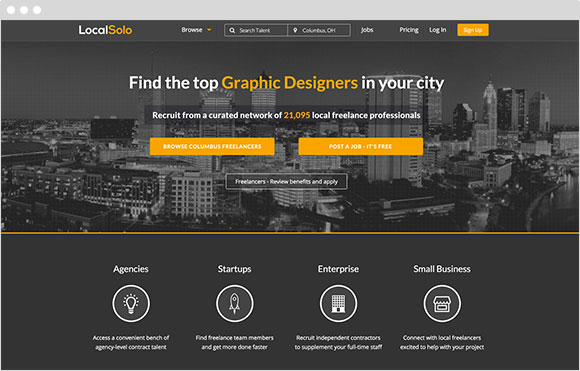
LocalSolo is actually a hybrid between a job board, a curated platform and a portfolio site (see next sections). In addition to adding your own bio to the site so employers can find you, you can be pro-active and browse jobs by city, or filter by jobs where remote working is okay. Many of these jobs are specifically for freelancers, which is why it is such a great site for those not necessarily looking for a full-time job.
Applying for jobs is made easy when you’ve created a profile on LocalSolo, and there are a variety of other membership perks when you join (membership for freelancers is free).
According to LocalSolo, over 5000 employers use their service to find talent, and unlike most other sites, the freelancers use the site to work freely with each other.
Find Bacon
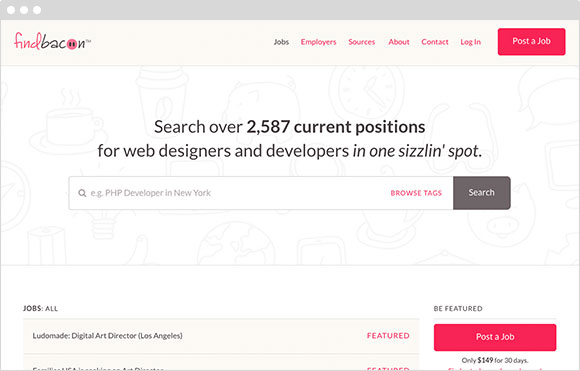
There are dozens of high-quality job sites out there that offer positions both full-time and freelance for web designers and developers. Find Bacon is a site that aggregates each of these sources for a single searchable database of opportunities.
For example, you can search for “ Freelance Remote” on Find Bacon and discover a handful of potential clients that currently need assistance no matter where you live. You can even drill down into your hometown to see local opportunities.
Tip: Be creative. While some of these jobs are seeking out full-time candidates, it just might be worth reaching out to them offering your freelance services for that role. You may end up creating a win-win situation for that client and yourself.
WeWorkRemotely
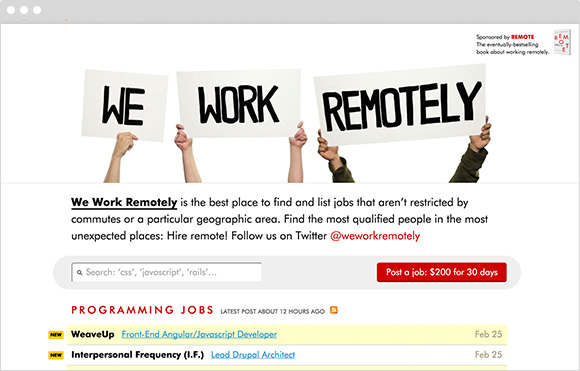
WeWorkRemotely is a job board that focuses on the niche of remote positions. While not every job on the site is a freelance position, you can easily search for the term "Freelance" to narrow down your results. Many of these jobs are medium-long term freelance positions, which can be great if you are yearning for some income stability while maintaining the benefits of being an independent worker.
While many freelance job boards focus on designers and developers, WeWorkRemotely goes beyond these positions and offers remote opportunities for customer support personnel, marketers, and copywriters as well.
Workshop

If the thought of perusing job boards sounds daunting, then let Workshop find the leads for you. Workshop sends a daily email with hand-picked job opportunities custom-tailored to your skillset. Robert Williams and his team monitor over 300 job boards, and distil the posts down to contain only the best jobs, saving you time and landing you the right jobs faster.
This is a paid service, born out of the desire that Williams had as a freelancer to simply pay someone to find leads for him. In addition to the daily emails, members of the service receive weekly follow-up reminders and 1-on-1 help closing clients.
Category 2: Portfolio Sites

Just as a job board lists available jobs, a portfolio site lists the profiles of available people to fill those jobs. Typically, it is free to post a profile, and as long as you use the appropriate keywords within your biography and skill-set, you will likely appear in search results when a potential client is looking to reach out to a freelancer like you.
Tip: When filling out a profile on a portfolio site, the more “specialties” you claim to have, the less competent you appear to be in any given one. Stick to a few areas that you know very well and you know are in demand. Often times clients have a specific need to fulfill, and the profile that is laser-focused on that skill-set is likely to be the one contacted.
Sortfolio
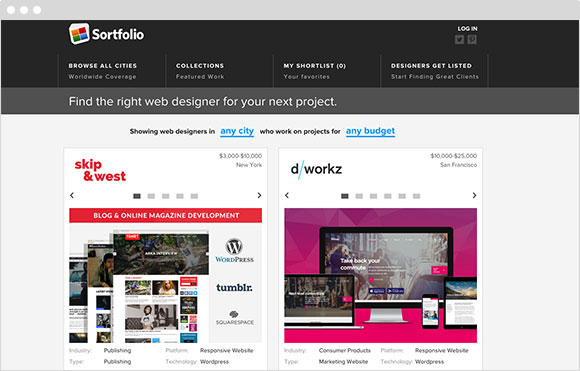
Originally created by the team behind Basecamp (who have since sold the property), Sortfolio is a popular portfolio site where you can display your creative work, typical budget, and physical location to be discovered by those looking to hire you for a project.
While the basic listing for your services is free, they do offer a “Pro Listing” which is currently $99/month, which gives you a larger interactive display ad, up to 6 large images, placement above the free ads, and a spot for your logo. Depending upon your typical project size, this might be a worthwhile investment to get in front of the right eyes to keep your project queue full.
Hubstaff Talent

Hubstaff Talent is another site that allows you to post your profile and get found by companies looking for remote talent. Whereas a few of the other services in this list cater specifically to designers, and thus use graphics-heavy portfolios, Hubstaff talent has a broader approach, allowing you to write up a bio, include links to your work, and upload a resume.
The best part about Hubstaff Talent? It's completely free, with no markups or fees for the freelancer or business owner.
- To help business find great freelancers. Hubstaff Talent has top quality freelancers creating profiles every single day. They understand the importance of finding and retaining talented creatives, one of the main ways to do this is by keeping their services free.
- To help remote agencies show their services to the world. Hubstaff has thousands of clients that use their time-tracking services on a daily basis, many of which have service-based businesses and are amazing at what they do. Hubstaff Talent was designed as a free way to help them find more clients.
Hubstaff Talent has thousands of remote startups, software companies, agencies and e-commerce businesses that are looking for talent just like you. Sign up for a profile to gain more leads and receive communication directly from these hiring businesses.
Krop

Krop is a hybrid portfolio/job board site that allows visual portfolios for agencies and freelancers. These are some of the most beautifully designed profiles available as templates, but are geared heavily towards visual design and photography.
You can add your résumé to Krop for free along with a couple of images, but a full portfolio website costs $9.99 per month. This is much cheaper than Sortfolio, but because it is a more affordable solution, the competition will be higher as well.
Carbonmade

Carbonmade is focused only on online portfolios (it does not have a job board). Many visual creatives host their profiles on this site, which can be easily searched by potential clients. Profiles can include about and contact pages in addition to project-based pages.
Pricing starts at $6/month for displaying up to 10 projects. Higher plans are $12 and $24 per month, and remove branding, allow custom domain binding, and higher project counts.
Category 3: Curated Platforms

In order to save time and reduce the risk of hiring a sub-par freelancer, some clients are opting for services that curate a list of independent workers in order to fill their needs. Getting listed on these sites might not be easy, but if you are accepted, you can begin the client/freelancer relationship with a greater sense of trust, since they know that you have already been vetted.
Toptal
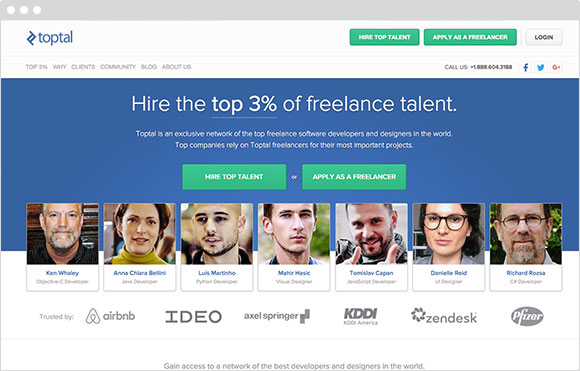
Toptal is another site specifically for freelancers that differentiates itself by claiming that it provides access to the top 3% of freelance talent. They claim this percentage because of their own proprietary screening process through which apparently only 3% of the applicants to the site are accepted.
Folyo
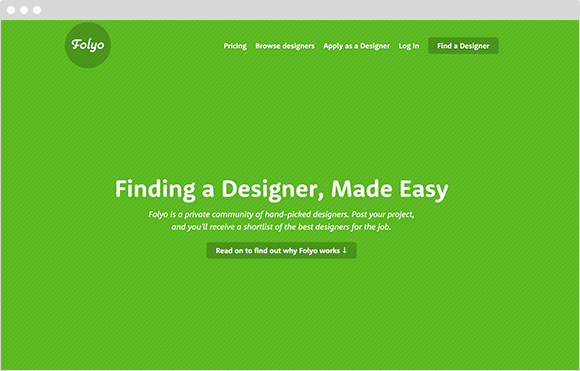
If you're a freelance designer, consider applying for Folyo, a curated shortlist of available freelance designers. Folyo currently has over 1000 designers in the system, so if you do high-quality work for a reasonable price, it shouldn't be too hard to join up.
Folyo allows designers to pick their areas of expertise: UI, UX, web, icons, logos, print, mobile, illustration, and package design. Separating out these specialties prevents poor-fitting projects from coming across your plate.
Crew
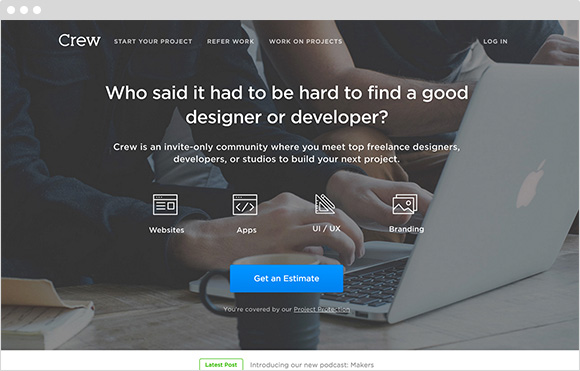
Crew is another platform that pairs freelance designers and developers with companies who don't want to sift through a lot of profiles or applications, and are willing to pay to receive only a select few that are qualified for the job. To become a member of Crew, you need to apply to join the waiting list.
Benefits of being selected for Crew include:
- 1-1 access to a person who helps make sure you get the work you want
- No recruiters
- Filtered project offers (only 20% of projects are accepted)
- Average project budgets of $10,000.
In addition to these benefits, Crew provides project management tools and a built-in legal setup within their platform.
Hirable
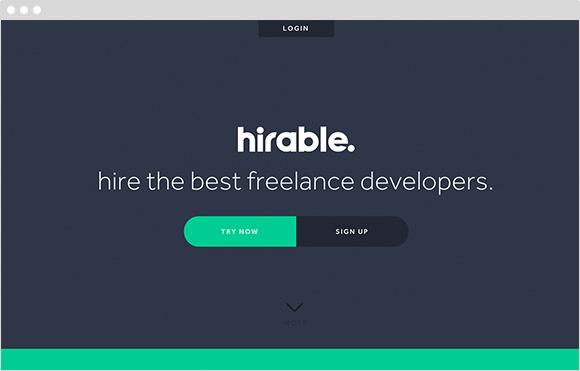
Hirable is a curated list of developers, up-to-date with current availability listings. You can mark yourself as hireable, hireable soon, or busy. This makes it nice for those times when you book a large project, and aren't actively looking for new projects, but will be doing so again in the future.
Clients can browse profiles and save their favorites for later viewing, so even if you aren't available now, they can be notified when your status changes down the road.
Gun
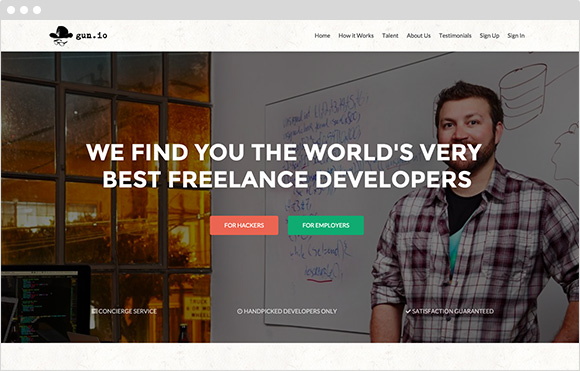
Boasting the highest placement rate in the industry, Gun matches select freelance developers with clients. This service is more hands-on than the others in this space, by actually doing the screening on a per-project basis, and talking to developers before handing a short list over to the client for final selection.
This service is heavily geared towards developers involved in the open-source community, using Github profiles as the primary method of applying for the service. If you live, breathe, and eat code, this might be the service for you to keep your client queue full.
Category 4: Full-Service Platforms

Taking the concept of a hybrid job board and portfolio site a step further, full-service platforms add in the additional services of handling communication, payments, proposals, bids, and conflict resolution. Some even employ escrow services to ensure fair payments are made.
Of course, with all of these features comes a percentage of your payments going to the platform itself. This is usually an acceptable payoff, however, since it was being on the site that landed you the job in the first place. Many times these extra services are well-worth the percentage cut taken to provide them.
Upwork

Two of the top platforms for freelancers (Elance and Odesk) combined a few years ago to create a new company, Upwork. Upwork may just be the largest platform of the following, and because of this, has a huge potential to provide a never-ending stream of clients your way.
While many freelancers are making a living solely off of Upwork, we at Harpoon are a little hesitant to mention it without this caveat: until you build up your rankings and work history on Upwork, it can be difficult to land jobs with decent pay. You are competing against a global network of freelancers, and often the only things that stand out to those looking to hire are hourly rates and reviews. If you don't have the reviews, it can be difficult to command the higher rate. That being said, in the long-run Upwork may very well be worth it, just be aware of the initial period where you will likely have to charge a lower rate to build up rankings.
Freelancer

Freelancer is a members-only job board where you can browse and bid on jobs after creating a free account and selecting your areas of expertise. A price range is given for every job so that simplifies the screening process to ensure you aren’t chasing a potential job with little upside.
With the free plan, you can only apply to a limited number of positions per month, but their paid plans allow you to increase that number.
A nice twist within the Freelancer ecosystem is the availability for exams that can help you to stand out from the crowd when applying for a freelance job.
Fiverr
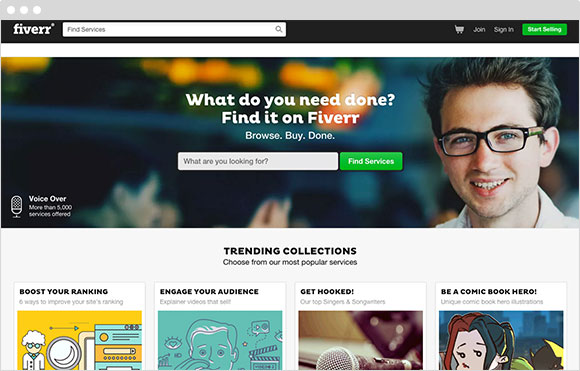
Before you dismiss Fiverr as a source of client work because you would never dream of working for $5 (each job starts as a five dollar gig), know that there are plenty of people who sell their services on there and make a nice living.
While the initial project must be for $5, you have flexibility in how you up-sell your service. For example, an illustrator might draw a simple black-and-white line drawing for $5, but a full-color illustration with the vector source file included can run much more.
The other benefit of Fiverr is that you typically do the same type of work over and over, so you can become efficient at what you provide, and most importantly, you set the stipulations for exactly what you provide.
Category 5: Networking

While going online can be a great way to find freelance jobs quickly, there is no comparison to the power of networking when it comes to paving the way for amazing opportunities down the road. I can personally trace all of my highest-paying projects to networking.
Building Relationships at Conferences

When I first went to a developers conference in 2008, I figured I would meet a few people that I’ve seen around Twitter, and learn a few things from the presentations. What I didn’t expect was how the year would unfold afterward, with a couple of those peer friendships becoming a source of client work and partnerships. When freelancers come across work that either they don’t have the bandwidth to handle, or perhaps lies outside of what they typically take on, it is natural to reach out to others whom they feel would be able to help the client out.
Certainly, there are many friendships that I’ve formed at conferences that have never amounted to more than a few laughs shared at an after-party, but some of those relationships have led to amazing opportunities that I could have never accessed on my own. The point is to go into a conference with low expectations while being certain to take steps that maximize value from your conference attendance.
Joining Local Meetups
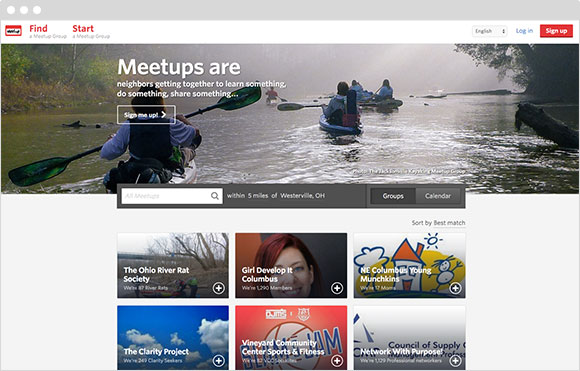
While conferences can be a great place to meet others within your industry from all over the globe, a local meetup is a perfect way to meet folks right within your city. Of course, these will be smaller events, but you will be able to follow up on conversations much easier since they can likely meet up again in the future (or many meetups are recurring).
How do you find these meetups? The easiest method is to head over to Meetup.com. You can also do a Google search for user groups centered around tools that you use. For example, I met some local designers and developers soon after moving to my town by attending the local Adobe user group.
Just as with conferences, the advantage of networking at these events in order to find more freelance opportunities is that some of these people might need to pair up with someone down the road on a project, or may know of some more local sources for freelance work.
Meeting Up Over Coffee

Grabbing coffee with someone is one of the best ways to build a professional relationship and discover how you can mutually benefit each other’s businesses. I get asked quite often to meet up for coffee from others in my hometown. Sometimes it works out, sometimes not, but there are definitely times that I’ve said yes to a coffee that I couldn’t imagine where I’d be right now if I had declined.
For example, the other co-founder of Harpoon, Andy Johnson, reached out to me years ago, before we knew each other, and asked if I’d like to grab coffee (he was moving to town and wanted to meet some other designer/developers in the area, he found me via a Google search). That short meeting uncovered the fact that we were both thinking about finding a co-working space, and a few weeks later ended up visiting a location together and signing up for a couple of desks. That led to years of working next to each other, grabbing lunches, discussing client issues, hiring each other for help, and eventually building Harpoon together.
All of this started when one freelancer asked another if he wanted to grab a coffee.
Category 6: Referrals

People hire freelancers that they trust, and nothing speaks trust louder than a personal referral from someone the client already knows. I chose my mechanic because my friend recommended them. I chose my primary care doctor because another friend was happy using them and made a recommendation. People will use you as a freelancer when you come recommended by someone else that they trust.
Hitting Up Past Clients

Don’t let the client/contractor relationship end with a delivered project and cashed check. At the very least request a testimonial to use for future clients, but even better would be to ask them if they have anybody in their network that might need your services that they could recommend. Depending upon the type of work you do, you might want to offer a future discount for referrals.
Many of your client referrals will come long after the project is completed. For example, a client may not be able to think of anyone right now that might need your services, but months down the road when a friend mentions needing someone like you, will your client mention your name and give a positive recommendation?
The key to ongoing client referrals is to maintain a positive, top-of-mind relationship with your existing and past clients. Try some of these tips for maintaining the relationship:
- Send holiday postcards to your clients
- Send a small gift at the end of a project to say “Thank you”
- Write a personal note on the anniversary of a project, ask them how things have been going since the project was completed.
- Randomly send links to articles your clients might find useful. Something like, “Saw this article and thought you might find it interesting…” This shows them that you are still invested in their success and are here to help.
- Comment on their blog
- Tweet links to their blog
- Retweet their tweets
- Engage with their Facebook page
- Leave recommendations on LinkedIn
The more these activities are spread out, the greater effect they’ll have. If you don’t use a CRM tool to set up reminders to keep in contact, simply use a dedicated calendar to remind yourself to complete an engagement activity on a schedule. You will remain top-of-mind for your client, and they’ll be more likely to share your information with those in their networks.
Maximizing LinkedIn
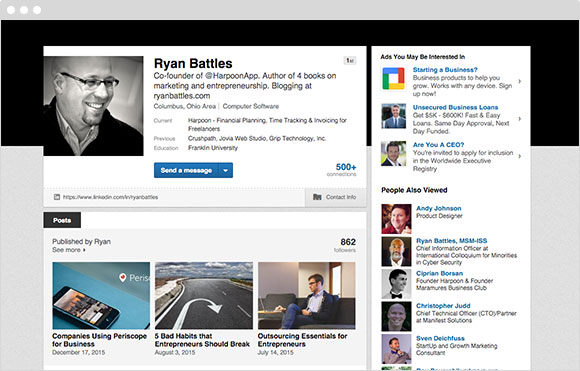
I’ll always remember the first time I saw my friend Mark’s profile on LinkedIn. He has over 60 recommendations from clients, all glowing testimonials of jobs well done. I recall the impact that had on me, and the sense of social proof I immediately felt when I saw the sheer magnitude of recommendations he has. From that point on I made it a point to ask for reviews, as well as leave reviews for others on LinkedIn.
Connecting with as many people as possible on LinkedIn, especially your previous clients, is a great way to discover referral potential through a simple search. Whether you are trying to connect with people in a particular company, or just types of businesses in your area, by searching profiles on LinkedIn, you can see how you might be connected to people via your own network. Once you discover how you can potentially connect to someone via your network, you simply need to reach out to that friend, relative, or former client and ask for an introduction.
The power of a personal connection can often be an essential factor in the client selecting your proposal.
Asking Your Network for Referrals

We’ve already discussed the importance of asking for referrals at the end of a project, but there is another great time to reach out to your network and just plain ask for referrals—when your well begins to run dry.
It happens to all of us, even those who usually have months of work ahead of us. Whether a client drops out at the last minute, or you discover the project just isn’t a good fit and you end up freeing yourself, sometimes you find yourself without anything to work on as a freelancer.
In these situations, it pays to have an action plan ready-to-go to drum up business fast. One effective strategy is to contact your entire network, asking if anyone could use your service, or more importantly if there is someone they think could benefit from your service that they could send your way. You could reach out to:
- Your family
- Your friends
- Your neighbors
- Your clients
- Your past coworkers
- Your social media followers
- Your friends on Facebook
If you’ve been helpful to others in the past, there’s a good chance that a handful of projects will come your way when you reach out and ask for them.
Category 7: Ads

When I decided to niche down my agency to a specific type of development work, I knew I had some keywords and target audiences to reach out to. To begin with, I used search engine ads for those keywords. I placed an ad for people looking for an “ExpressionEngine developer”, and within a month I had to stop running the ad because I had already filled up my queue of work for the next three months. It was then I realized the power of advertising when paired with specific targeting of your audience.
Facebook Ads

If you can narrow down your target client to a particular demographic, then Facebook is a great place to try some advertisement. To begin with, you’ll need a high-quality landing page to send them to once they click on your ad. This also helps to track your ad’s effectiveness within Google Analytics. There are many tools out there to help you easily create a landing page, Unbounce allows you to create some for free, as long as you don’t mind their branding in the footer.
With a landing page setup, you can go to Facebook for Business and create your ad. You can select your demographic amongst Facebook users, choose how you want your ad displayed, and the URL of your landing page. For as little as $5/day (even if you only run it one day total), you can get your business in front of a wide audience.
Twitter Ads

Twitter’s advertising platform is similar to Facebook’s in that you can select your target demographic, and send sponsored tweets their way. Personally, I’ve had limited success with Twitter ads, but I’ve heard from others who swear by them as far as being a low-cost method for driving sales. As with any marketing channel, it is worthwhile for you to give it a cursory try to see if it works for your offering and audience.
The simplest way to get started with Twitter ads is by visiting http://ads.twitter.com. You can choose to promote a tweet, pay to acquire followers, or to promote a particular hashtag. The most valuable promotion category for freelancers is probably promoting a tweet. You can more easily grow your following, and for a lot cheaper, by using a tool such as Crowdfire. With promoted tweets, you pay per engagement, so even if someone clicks on the image you’ve attached to your tweet to make it larger, that counts as an engagement, and you’ll pay for it.
To maximize your advertising spend on Twitter, I would recommend either not using images at all in order to prevent those paid engagements, or ensure that your shared image is likely to compel someone to seek further information from you.
Search Engine Ads

As I mentioned in this section’s intro, search engine ads might just be the best route for a paid method to find more freelancing jobs. The reason is simple, those who see your ads are in the act of searching, and they are likely looking for a solution! Since what you provide as a freelancer is a solution to their needs, this is a great place to draw in new clients.
Search engine ads work best when you have a niche that you focus on, where potential clients are likely to be searching. Targeting keywords like “new york web design” is likely to be expensive since you’ll have every New York-based marketing agency to compete with. However, if you narrow it down to something a little more specified, like “marionette backbone developer”, your competition is likely to be lower, and your click-throughs much cheaper.
If people are searching for freelancers with your niche skillset, search engine ads might just be the most effective solution to keeping your plate full of work.
Category 8: Create Them

Even if you are stellar at implementing all of the above tactics for finding freelance jobs, there still may come a time where you have no work. It happens to the best of us. Fortunately, we have the most reliable client in the world as a backup—ourselves.
Getting Passionate about Side Projects

I have met very few freelancers that don’t also have some side project in mind. Whether they are in the idea stage, or they are building an audience for the product, it is common to have a project of your own when you are a freelance worker. Before Harpoon, my friend Andy Johnson and I built a little online community for users of our favorite content management system ( ExpressionEngine) called Director-ee. While we don’t make anywhere near a full-time salary from it now, we do get a decent amount of passive income. We used the downtime we had as freelancers to build up a fun project that over the years has brought in more income that we could have made building it for a client.
Don’t know where to start when it comes to building a side project? I would start with Rob Walling’s excellent Start Small, Stay Small. While the book itself is geared towards developers, there are a lot of general tips on entrepreneurship in there, and you can always partner up with a developer if that isn’t your skill-set.
Don’t let a lack of paying clients stop you from working hard each day. Just focus on your own projects during those times and reap the rewards in due time.
Don’t be Afraid to Invent a Client

Perhaps you don’t have the desire for a side project, then what? Well, you can always build your portfolio when there is a lack of freelance jobs available.
But I don’t have any clients right now to build up my portfolio with.
Who cares, make some up. For example, when I was first getting started as a freelance web designer/developer, I had 0 items in my portfolio. To fill out my portfolio I just made up some company names, like the “Columbus Landscaping Company,” and built a website for this fictitious company. I never lied about this either, because quite honestly, clients don’t really care about that. What they care about is your ability to do something valuable for them. If they like what they see in your fictitious project, they’ll hire you to provide the same value to them.
Leverage downtime as a chance to build up your portfolio, polish up your skills, and move your business forward.
Trying Some Concept Work

A slight variation of inventing a client is the task of inventing a project. Many designers out there have taken upon themselves the task of redesigning popular websites such as Amazon and IMDB. This isn’t necessarily to show that they think they are better than the existing designers that work for these companies, but rather to showcase the type of work they can do if called to the task.
When the work has slowed and you need to fill in the time, perhaps you should try doing some concept work and sharing it with the rest of the world. Who knows, you may just get noticed by the company you are doing concept work for and may land a contract. At the very least, the world will see the type of work that you can do, framed within a company that they may already be familiar with.
Conclusion
Without a traditional boss, one of the challenges a freelancer faces is staying on track with productive activities, especially when you are not “under the gun” with a close deadline. There will inevitably be times where client work will run low, but employing a few of these 27+ methods of finding freelance jobs will ensure that your workload remains at more of a constant level.
Some great advice that I learned early on in my freelancing career is:
Your time at work should be spent either making money, or empowering you to make money in the future.
Next time you find yourself low on client work, refer to this list of strategies and pick out a few to drum up some more business. To make this easier, I’ve distilled this entire article down to a single-page PDF for easy reference.
Download the PDF Cheat Sheet Here
Thanks for reading! I’d love to hear on Twitter any other advice you have on drumming up client work. Perhaps with your help, I can republish this list with a few more tips.







